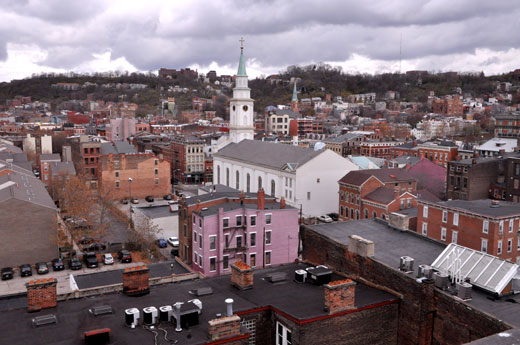
The idea has been simple in terms of rejuvenating Cincinnati's
historic Over-the-Rhine neighborhood - make a large concentrated investment and wait for individual and smaller investors to fall in line once success has been proven.
That idea and the efforts the
Cincinnati Center City Development Corporation (3CDC) have put forward have proven to be successful so far. Hundreds of new residents have moved into a neighborhood that now boasts the hottest real estate market in the region. New businesses have also opened up, while crime has plummeted and new investments have been made to improve the neighborhoods infrastructure and appearance. But to this date, the individual and smaller investors have yet to fall in line, the question now is why.
One such individual investor is Jim Uber. Uber is a current Over-the-Rhine resident who has fallen in love with the neighborhood, but now is looking at investing in a historic property that he can renovate and create as his dream residence. While navigating the real estate evaluation process, Uber has run into several difficulties that might make investing in this neighborhood a daunting measure for others like him.
One challenge is how to deal with historic buildings and locate contractors and architects who are knowledgeable and specialize in such projects. But the a larger and more daunting challenge is securing the financing to perform such projects on a small scale.
"Most banks won't generally offer a traditional mortgage for the small amounts that we are generally talking about in OTR - say 20-50K - because it's apparently not worth it for them," explained Uber. "Those that do offer such loans are more usually geared towards developers, not individual investors."
Federal programs, such as the 203(k) loan program, are available but require an intimate knowledge of the system and a lot of work that not many individual investors are willing to do.
"I found one guy that would do these, but after enduring the speech he gave me about how difficult it was, and how many people tried and then gave up, you realize that only a small fraction of those hearing this pitch would actually go this route," Uber said.
Compounding this, Uber notes that much of the loan negotiation relies on property appraisal, which must equal the total purchase and projected rehab costs - something many of the boarded up properties in historic Over-the-Rhine can not match. This also doesn't account for the upfront inspection, appraisal, and plan costs that often tally into the thousands of dollars. It just might be too hard a pill to swallow for an individual home owner who has yet to secure financing for a property purchase in which they are interested.
"Putting all of the pieces together is a formidable enough challenge that it thwarts the individual investor and homeowner," said Uber who went on to say that a one-stop shop for small and individual investors that helps to walk them through this otherwise complicated process might be advantageous.
"All in all, I'm having a blast and totally willing to make this happen, but I fear that unless the process is made much easier, it will never get a lot of traction for individual investors," said Uber. "We'll have to rely on the big boys to make our houses for us, and that's just a shame. We need a strong grass roots movement to make OTR grow more organically as investment continues."
Writer:
Randy A. SimesPhotography by Scott BeselerStay connected by following Randy on Twitter
@UrbanCincy
Enjoy this story?
Sign up for free solutions-based reporting in your inbox each week.